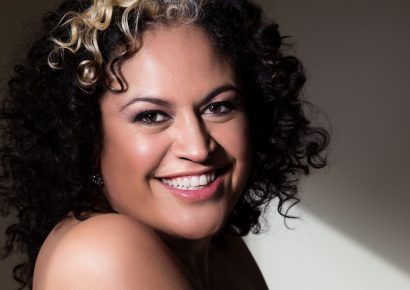Featuring QR codes, sitting in ‘bubbles’ and table service merch.
“I never thought a big historical event would come along and prove how good some people are at dancing in a chair,” says Ball Park Music frontman, Sam Cromack.
He’s speaking to an audience of 188 people, sat at socially distanced ‘bubble’ tables at Brisbane’s The Triffid. The indie rock band is “giving the middle finger to the pandemic” and hosting a week-long residency at the iconic venue for the release of their latest self-titled album.
As a former, once-a-month live music patron, it’s hard to believe that I haven’t seen a band perform in 11 months. My last gig was BENEE at Max Watt’s in Melbourne, to be exact. Pre-COVID, pre-social-distancing, and pre-the-“new-norm”.
Buying the Ball Park Music tickets felt forbidden and knowing that my friends in Melbourne couldn’t even step outside of their five-kilometre radius at the time made the thought of seeing live music even more strange.
But, as the date approached, I was excited to support the music industry and see what concerts in the COVID era look like.
Safety first
We arrive at The Triffid to see a line of people waiting outside standing on red crosses fashioned from masking tape. There’s no pre-gig beer or mingling at the merch table as we’re told to wait outside until the doors open. Once security checks our IDs, we’re asked to turn around and face an iPad-like device that scans our faces. At first, I think it’s a second form of ID but once the device turns green and says “36.1” I realise that it’s just taken my temperature.
After it’s been confirmed that our bubble of four is all there, a staff member leads us into the concert hall and takes us to our table. Each one is spaced about a metre apart and have QR codes placed on them for the menu. Everything is table service and I forget that I’m about to watch live music rather than eat in a (very) dimly-lit restaurant.
While waiting for the support act, I see a man delivering brown paper bags to tables. It looks like groups of people have ordered Uber Eats into the venue but rather than pulling out a burger and fries, they reach in and take out Ball Park Music t-shirts and vinyls.
That’s right, hand-delivered band merchandise.
It makes me wonder if Ball Park Music is selling more items this way compared to the traditional rush of concert-goers to the merch table as the last song finishes.
View this post on Instagram
Can you dance on a chair?
The support act, Simi Lacroix, gets the crowd going as much as he can while we’re all seated before Ball Park Music come on stage.
The band eases into the gig with the slower-paced ‘Alligator’. It feels acoustic, intimate and chilled but it gets harder to remain seated when they move into more energetic hits like ‘The End Times’ and ‘It’s Nice To Be Alive’.
In between songs, Cromack chats casually to the audience acknowledging the strangeness of playing to a seated venue.
“We’re still not used to you guys sitting down. It’s a bit weird for us all I think.”
After sitting at my desk working all day I just want to get up and dance, bump into strangers and laugh while jumping to the guitar riffs of ‘Fence Sitter’.
Instead, I mouth the words of my favourite lyrics to my friend across the table and look around to see other audience members getting in an upper-body workout, arms flailing and heads bopping to the beat.
What’s it like organising a socially-distanced show?
Once the gig is ending, I chat with The Triffid’s Assistant Venue Manager, David Robert Brooks, about what it’s been like organising strict, socially distanced gigs.
“It was a long two months without any shows and that really hurt us, not only financially but also emotionally. I think it was difficult at the start but once audiences understood how it had to work for us to be able to operate, they’ve definitely become more accommodating,” he says.
While licensed venues in Queensland began opening up again in June, it was on July 24 that authorities told venues, including The Triffid, to make sure patrons are seated in places where food and alcohol are served.
Brooks tells me that tonight the venue was only operating at 25 per cent of its pre-COVID capacity and that they are “definitely under the legal limit”.
These rules feel like a world away from the “before times” live music experience of rocking up and grabbing a beer at a crowded bar before pushing through hundreds of sweaty people, shoulder-to-shoulder to get a glimpse of your favourite band.
I ask Brooks if he thinks this is the future of concerts.
“I hope not. I hate missing out on the moshes. That was one thing that would always drive those big gigs, seeing people rammed up at the front. But, for now, it’s a nice, intimate show. I think it’s definitely going to change a few things though. People are loving the table service.”
As the socially-distanced gig comes to an end, I feel grateful to have seen live music for the first time in 2020. To see musicians being able to perform in real life rather than on an Instagram live and venue staff being able to do their jobs (albeit with some extra rules and latex gloves thrown in) is a special sight.
While a sit-down gig can never beat the experience of dancing in a crowd and bagging the front row, these restrictions are ultimately in place to keep us safe.
One day we’ll be able to dance again, but for now, I’m going to sit back, enjoy what we have and order some hand-delivered merch.
Never miss a story. Sign up to Beat’s newsletter and you’ll be served fresh music, arts, food and culture stories three times a week.

